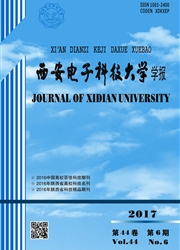

 中文摘要:
中文摘要:
传统模糊c-均值聚类算法没有考虑图像像素空间信息特征,在应用于合成孔径雷达图像分割时,由于合成孔径雷达图像中斑点噪声的影响,通常不能得到正确的分割结果.基于此问题提出加权空间隶属度和加权空间函数并应用于c-均值聚类算法,加权空间隶属度是多尺度条件下空间各相邻像素的位置和强度信息的加权隶属度值,加权空间函数中各加权空间隶属度的影响系数由自适应遗传算法优化,最终的隶属度值由加权空间函数修正.由于在这种聚类过程中融入了优化的空间信息,因此弱化了斑点噪声的影响,提高了分割精度.这种算法应用于实际合成孔径雷达图像分割实验,结果表明此算法对初始分类结果不敏感,具有较强的抗噪性能,改善了SAR图像的分割结果.
 英文摘要:
英文摘要:
Because the spatial information is not considered in the traditional fuzzy c-means (FCM) clustering algorithm, the serious inaccuracies with synthetic aperture radar (SAR) image segmentation can be caused by using the FCM algorithm. To improve the SAR image segmentation result, the weighted spatial membership and weighted spatial function are introduced into the FCM algorithm in this paper. The weighted spatial membership is composed of the weighted membership of the relative location and intensity of neighboring pixels under the condition of the multi-scale space. The influence degrees of the weighted spatial membership on the weighted spatial function are optimized by the adaptive genetic algorithm (AGA). The final membership of each pixel is adjusted by the weighted spatial function. Due to the introduction of the optimized spatial information during the process of clustering, the influence of the speckle in SAR images is minimized and the classification accuracy is improved. In our experiments, the real SAR images are segmented and the segmentation results demonstrate the superiority of the proposed algorithm to other methods. This algorithm is not sensitive to the initial segmentation result and is robust to despeckling.
 同期刊论文项目
同期刊论文项目
 同项目期刊论文
同项目期刊论文
 A change detection technique of SAR images based on graph-cut and generalized gaussian distributions
A change detection technique of SAR images based on graph-cut and generalized gaussian distributions 期刊信息
期刊信息
